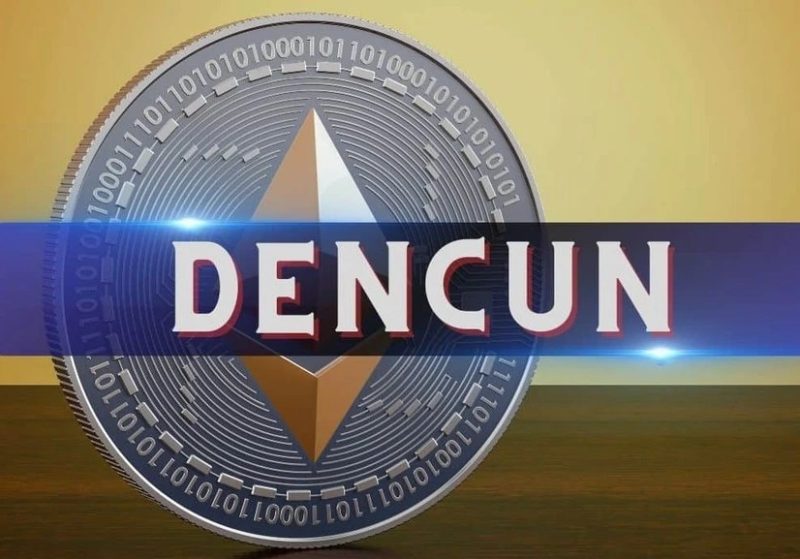Ethereum is on the brink of a significant transformation with the upcoming Dencun upgrade, set to make transactions cheaper and more efficient, especially for the layer-2 (L2) networks built on its platform. This upgrade, combining elements from projects named Deneb and Cancun, marks the most considerable change in Ethereum’s code in over a year, aiming to significantly lower fees for its growing ecosystem.
What is the Dencun Upgrade?
Scheduled for activation on Wednesday around 13:55 UTC, Dencun represents a pivotal moment for Ethereum, introducing a major update since the Shapella upgrade of April 2023, which first allowed for the withdrawal of staked ether (ETH). At its core, Dencun is about implementing a concept known as “proto-danksharding” through Ethereum Improvement Proposal (EIP) 4844, which proposes a novel way of handling transaction data to alleviate the network’s high gas fees.
The Promise of Lower Fees
By introducing “blobs” for data storage, Dencun aims to ease the burden on layer-2 networks such as Arbitrum, Optimism, and Polygon, which have become crucial for scaling Ethereum. These networks process transactions in large batches, reducing the overall demand on Ethereum’s main chain and, as a result, have seen billions in deposits and consistently outpaced the main chain in transaction volumes over the past year.
With Dencun, these L2s will have access to a dedicated space for posting their data, bypassing the need to fit this information into conventional transactions at a higher cost. This should, in theory, enable them to settle more data more efficiently and at a lower cost to end-users.
Proto-danksharding: A Step Towards Sharding
Proto-danksharding is seen as Ethereum’s initial foray into sharding, a technique envisioned to break the blockchain into smaller segments or mini-chains, thus enabling it to process transactions more efficiently and at a lower cost. While a fully-developed sharding solution is still years away, proto-danksharding represents a significant step forward in addressing the issue of high transaction fees by optimizing how L2 networks settle data on Ethereum.
Impact Beyond Ethereum
The upgrade is also expected to benefit a new category of blockchains known as data availability (DA) layers, including Celestia, EigenDA, and Avail. These networks, which L2s often use for storing transaction data, stand to gain from reduced costs for data downloading made possible by proto-danksharding.
Looking Ahead: The Road After Dencun
Following the Dencun upgrade, Ethereum developers will turn their attention to the next set of improvements, currently dubbed Electra + Prague (Petra). Although the content of this future upgrade package remains under consideration, a notable candidate is the implementation of “Verkle Trees,” a new data structure designed to enhance nodes’ capacity for storing vast amounts of data.
Karl Floersch, CEO of OP Labs, underscores the importance of scalability as a critical factor enabling seamless collaboration across the Ethereum ecosystem. He believes that the innovations brought by EIP-4844 and the Dencun upgrade will pave the way for more integrated and user-friendly systems that can compete with centralized platforms.
As the Ethereum community eagerly anticipates the launch of the Dencun upgrade, many are celebrating this milestone through watch parties and live streams, highlighting the collective enthusiasm for a more efficient and cost-effective future on the blockchain.
